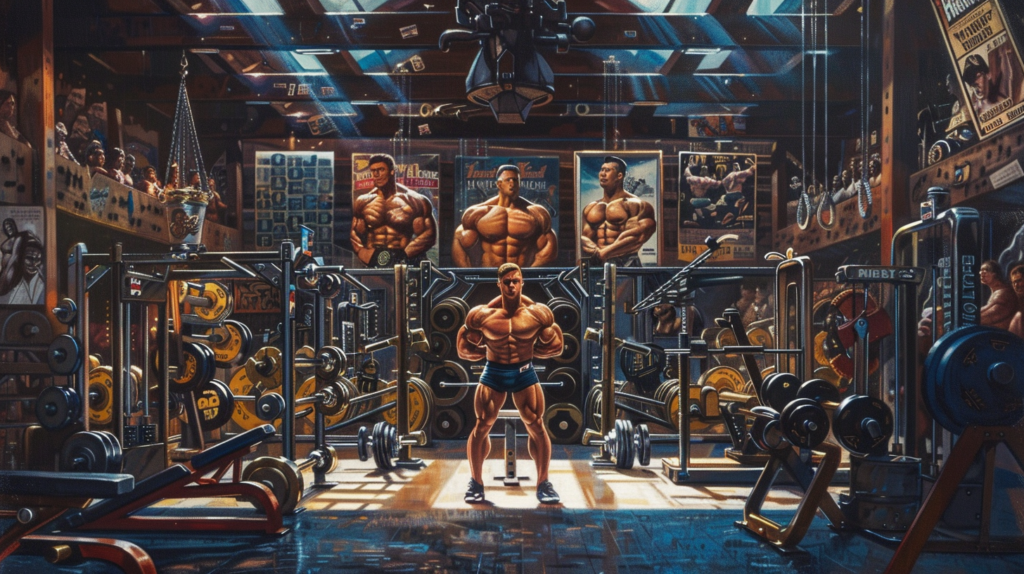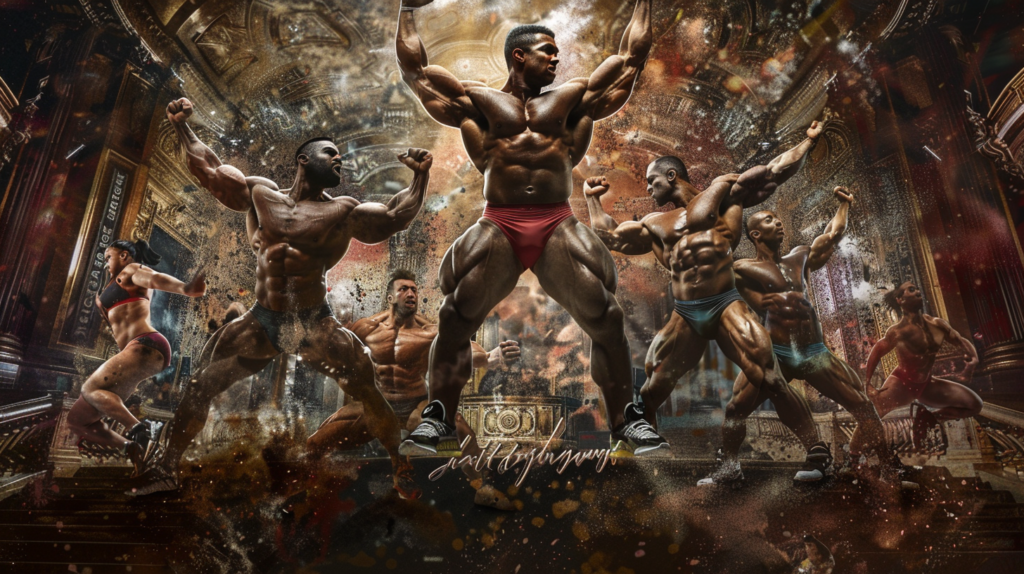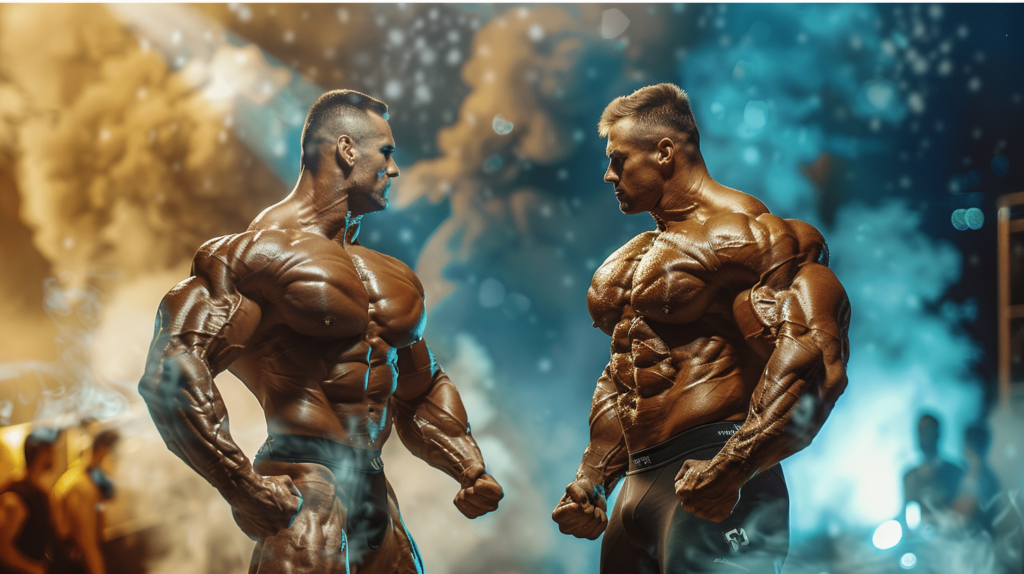Wesley Vissers has expertly laid out his predictions for the upcoming Mr. Olympia showdown, and it’s sure to be thrilling. He sees Ronnie Coleman reclaiming the title with his unmatched mass and conditioning. Phil Heath’s aesthetic appeal places him second, while Jay Cutler’s impressive size lands him in third. Dorian Yates, with his intense conditioning, is expected to round out the top four. This analysis not only highlights the evolution of bodybuilding standards but also ignites debates on mass versus conditioning. Stick around, and you’ll find out more about what makes this competition so riveting.
Key Takeaways
- Wesley Vissers predicts Ronnie Coleman will win the Mr. Olympia title due to his unmatched mass and conditioning.
- Phil Heath is expected to secure second place, celebrated for his aesthetic appeal and symmetry.
- Jay Cutler’s impressive size and comeback story position him in third place in Vissers’ predictions.
- Dorian Yates, known for his intense conditioning, is anticipated to finish fourth in the competition.
- These rankings reflect the evolving standards in bodybuilding, emphasizing both mass and conditioning.
History of Mr. Olympia

Established in 1965, Mr. Olympia stands as a beacon in the bodybuilding world, marking significant milestones that reflect the sport’s evolution. Each year, it showcases the pinnacle of human physique and dedication, pushing boundaries that challenge our understanding of strength and aesthetics.
I’ve watched legends like Ronnie Coleman and Dorian Yates redefine what it means to be a champion, each leaving a unique imprint on bodybuilding standards. The competition not only celebrates individual achievements but also illustrates how far we’ve come.
As we approach the 60th anniversary, it’s fascinating to see how the ideals of mass, symmetry, and conditioning have transformed over the years, inspiring countless individuals to pursue their own paths to liberation through fitness.
Wesley Vissers’ Predictions

As we reflect on the rich history of Mr. Olympia, I can’t help but share my bodybuilding predictions. I believe that when all competitors are at their peak, Ronnie Coleman would take the crown due to his unmatched mass and conditioning. Following closely would be Phil Heath, known for his aesthetic appeal, with Jay Cutler and Dorian Yates rounding out the top four.
Here’s a breakdown of my predictions:
| Rank | Competitor | Strengths |
|---|---|---|
| 1 | Ronnie Coleman | Mass, Conditioning |
| 2 | Phil Heath | Aesthetic Appeal |
| 3 | Jay Cutler | Dominant Size |
| 4 | Dorian Yates | Intense Conditioning |
These rankings reflect the evolution of bodybuilding and highlight what truly matters in competition.
Legendary Bodybuilders Profiles

When I think of legendary bodybuilders, a few names instantly come to mind, each representing a unique era and style in the sport. Their influence goes beyond just competition; they’ve shaped modern bodybuilding techniques and ignited legendary rivalries.
- Ronnie Coleman: Known for his incredible mass and conditioning, he set the bar high.
- Dorian Yates: Revolutionized training with his high-intensity techniques and stunning conditioning.
- Jay Cutler: His comeback story and massive size showcased resilience and dedication.
- Phil Heath: Blended aesthetics with power, redefining what a champion looks like.
- Arnold Schwarzenegger: The original icon whose charisma and physique inspired generations.
These athletes not only competed; they transformed bodybuilding into a global phenomenon, liberating countless individuals to pursue their fitness dreams.
Importance of Mass vs. Conditioning

In the world of bodybuilding, the debate over mass versus conditioning often sparks passionate discussions among competitors and fans alike. I believe both aspects hold significant weight, yet their importance varies based on competition standards.
Mass advantages can create an impressive visual impact, drawing immediate attention. However, without effective conditioning techniques, that mass can appear cumbersome rather than aesthetic.
I often think about legends like Ronnie Coleman, whose blend of size and conditioning set a benchmark. In contrast, Dorian Yates showcased that impeccable conditioning can elevate a physique, making it stand out despite less mass.
Ultimately, achieving a harmonious balance between mass and conditioning is essential for modern bodybuilders aiming for success on stage.
The Evolution of Bodybuilding Standards

The standards in bodybuilding have evolved significantly over the decades, reflecting changes in both aesthetics and training philosophies.
As I look back, it’s clear how these shifts have shaped competitors and fans alike. Here are some key aspects of this evolution:
- Bodybuilding Aesthetics: Shift from sheer size to symmetry and proportion.
- Training Techniques: Introduction of high-intensity workouts and periodization.
- Nutrition: Emphasis on tailored diets for peak performance.
- Diversity: Increased representation of various body types and styles.
- Technology: Advanced supplements and training gear enhance results.
These changes not only redefine what it means to be a bodybuilder but also empower us to pursue our unique fitness journeys.
Embracing this evolution liberates us from outdated ideals, encouraging a more personal approach to bodybuilding.
Upcoming Competitions to Watch

Excitement fills the air as we approach a thrilling lineup of upcoming bodybuilding competitions that promise to showcase elite talent and fierce rivalries.
I can’t wait to see how new competitors like Wesley Vissers, who’s been refining his training techniques, will stack up against seasoned champions like Chris Bumstead and Ramon Queiroz.
Each event won’t only highlight their physical prowess but also reveal the latest advancements in training methodologies that shape their physiques.
As we gear up for these contests, keep an eye on how these athletes adapt their strategies and push boundaries.
With the historic Mr. Olympia on the horizon, it’s a pivotal moment for both established icons and emerging stars in the bodybuilding scene.
Future of Bodybuilding Events

As we anticipate the upcoming competitions, it’s clear that the future of bodybuilding events is set to be dynamic and transformative.
With advancements in training techniques and nutrition strategies, competitors are pushing boundaries like never before.
Here’s what to look forward to:
- Increased focus on holistic health and well-being.
- Integration of technology for training optimization.
- Greater emphasis on aesthetics alongside mass.
- Expansion of diverse categories and inclusivity.
- Cross-pollination with fitness trends like functional training.
These shifts are redefining how we view bodybuilding, allowing athletes to express their individuality and creativity.
As we embrace these changes, I’m excited to see how they’ll revolutionize the sport, creating opportunities for growth and liberation among bodybuilders everywhere.
Frequently Asked Questions
What Is the Prize Money for Winning Mr. Olympia?
I’ve always been intrigued by the prize distribution in Mr. Olympia.
Winning this prestigious competition offers a significant financial impact, with the champion taking home a hefty prize that can exceed $400,000.
This amount not only reflects the hard work and dedication of the athletes but also underscores the sport’s growing popularity.
It’s inspiring to see how financial rewards can motivate bodybuilders to push their limits and endeavor for greatness on stage.
How Do Judges Score Competitors During the Competition?
Imagine a grand theater where artistry and strength collide—this is how judges score competitors. They rely on specific scoring criteria like symmetry, muscle definition, and overall presentation.
Judge preferences can vary, but they often look for flawless posing techniques that captivate the audience. Each competitor’s presentation tells a story, revealing their dedication and hard work.
In this spectacular display, every detail matters, influencing the judge’s final decision and ultimately shaping the competition’s outcome.
What Are the Different Categories in Mr. Olympia?
When I think about the different categories in Mr. Olympia, I’m fascinated by the variety of competition divisions that showcase unique aspects of bodybuilding.
There’s the Classic Physique, emphasizing aesthetics and symmetry, and the 212 division, tailored for competitors weighing up to 212 pounds.
The Women’s categories, including Figure and Bikini, highlight femininity and shape.
Each division allows athletes to express their hard work and dedication while celebrating the art of bodybuilding in diverse ways.
How Has Mr. Olympia Evolved Since Its Inception?
Mr. Olympia’s journey reflects bodybuilding history—it’s a tale of transformation and aspiration.
Since its inception, I’ve seen competition evolution in size, conditioning, and strategy. Early competitors focused on aesthetics, while today’s athletes embody mass and symmetry.
The standards have shifted, showcasing diverse physiques and training methods. As I watch this evolution, I’m inspired by how each champion contributes to a legacy that liberates aspiring bodybuilders, pushing boundaries and redefining excellence in the sport.
Are There Any Age Limits for Competitors in Mr. Olympia?
When it comes to age regulations for Mr. Olympia, there aren’t strict limits that disqualify competitors based on age alone.
Instead, eligibility primarily hinges on a competitor’s performance and conditioning.
I’ve seen athletes in their 40s and even 50s compete fiercely, proving that age is just a number in this sport.
It’s inspiring to witness such dedication, showing us that passion and training can defy age barriers in bodybuilding.














